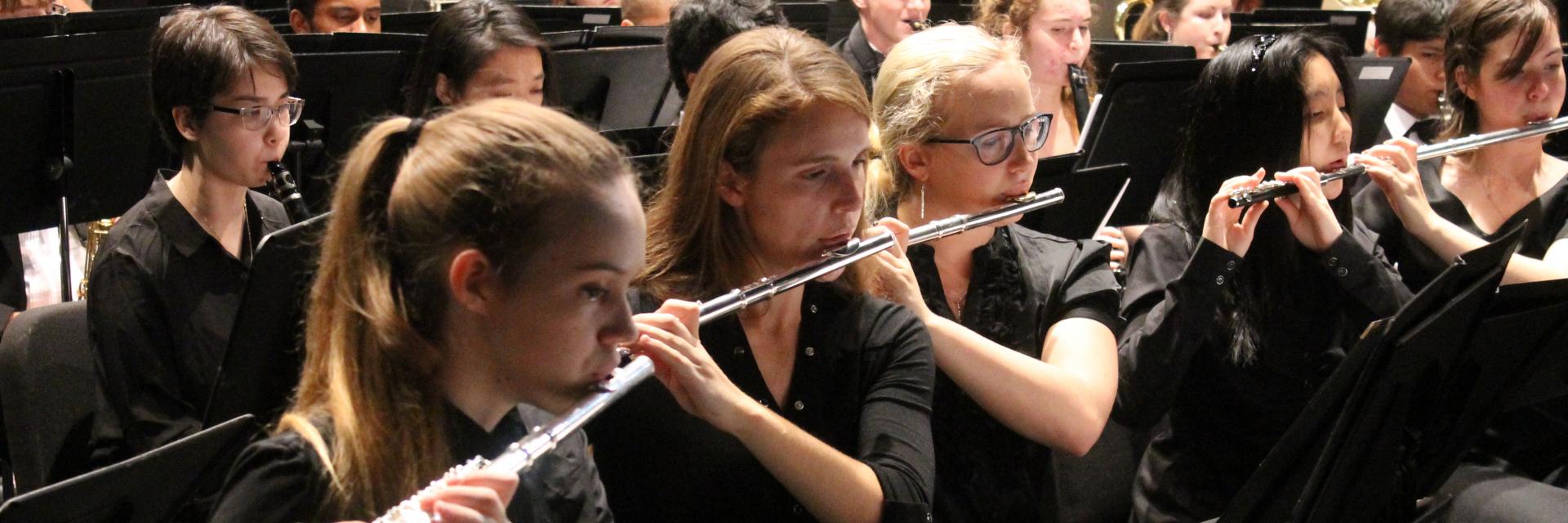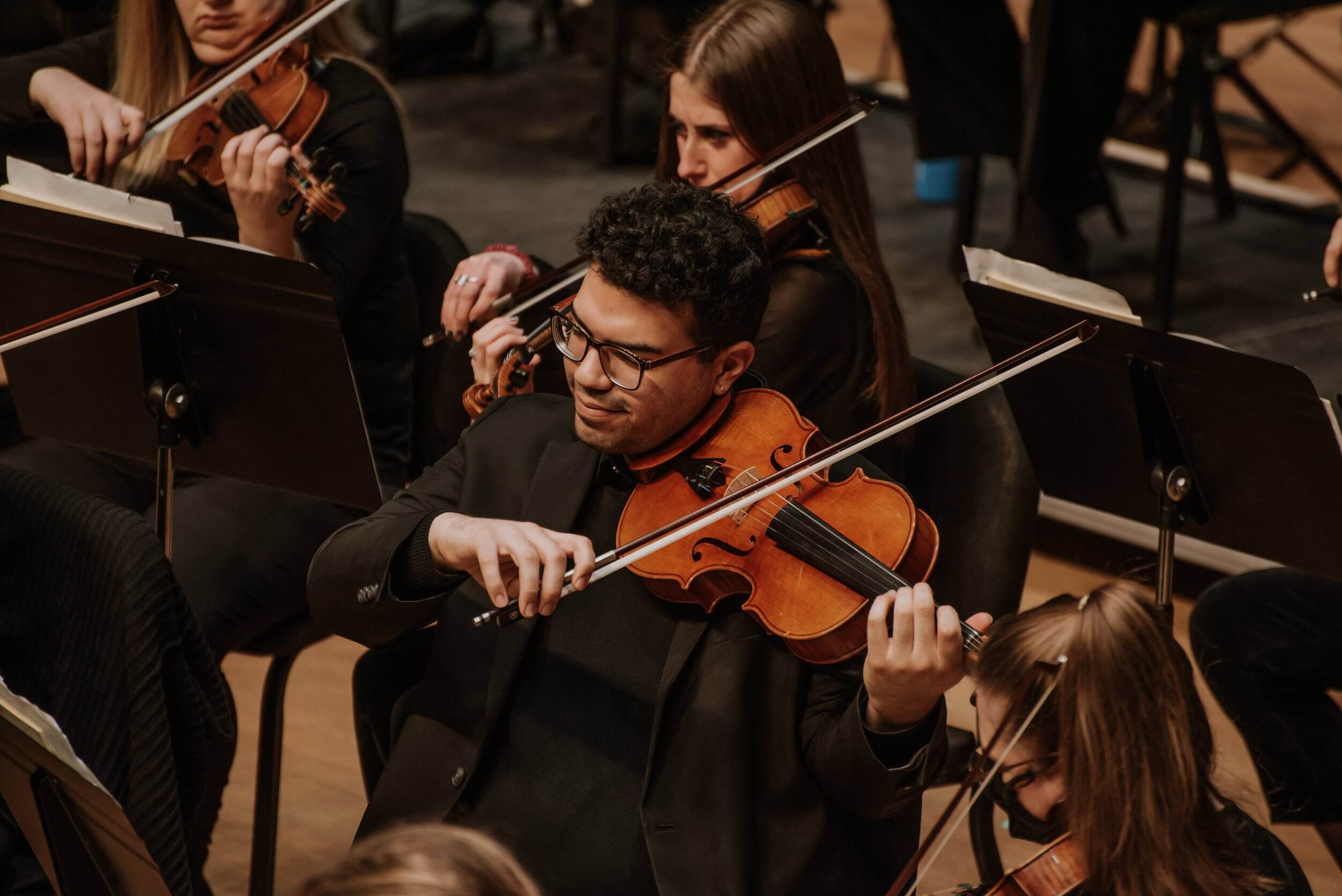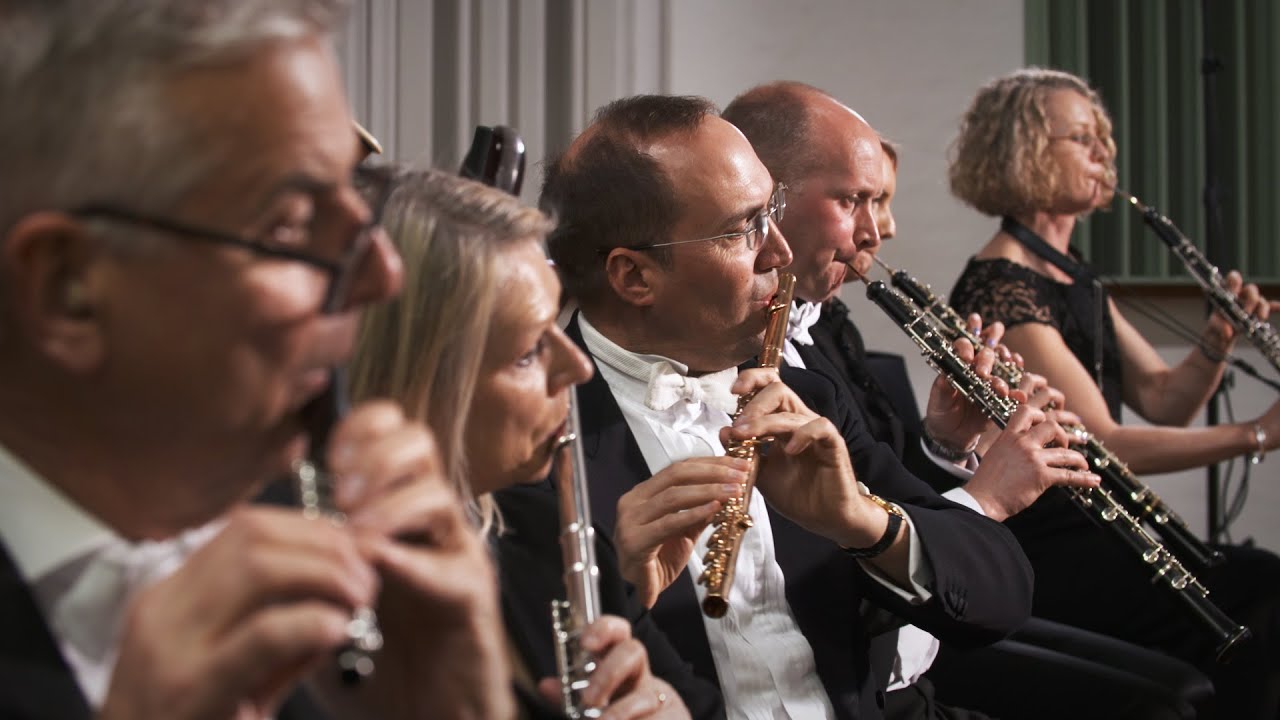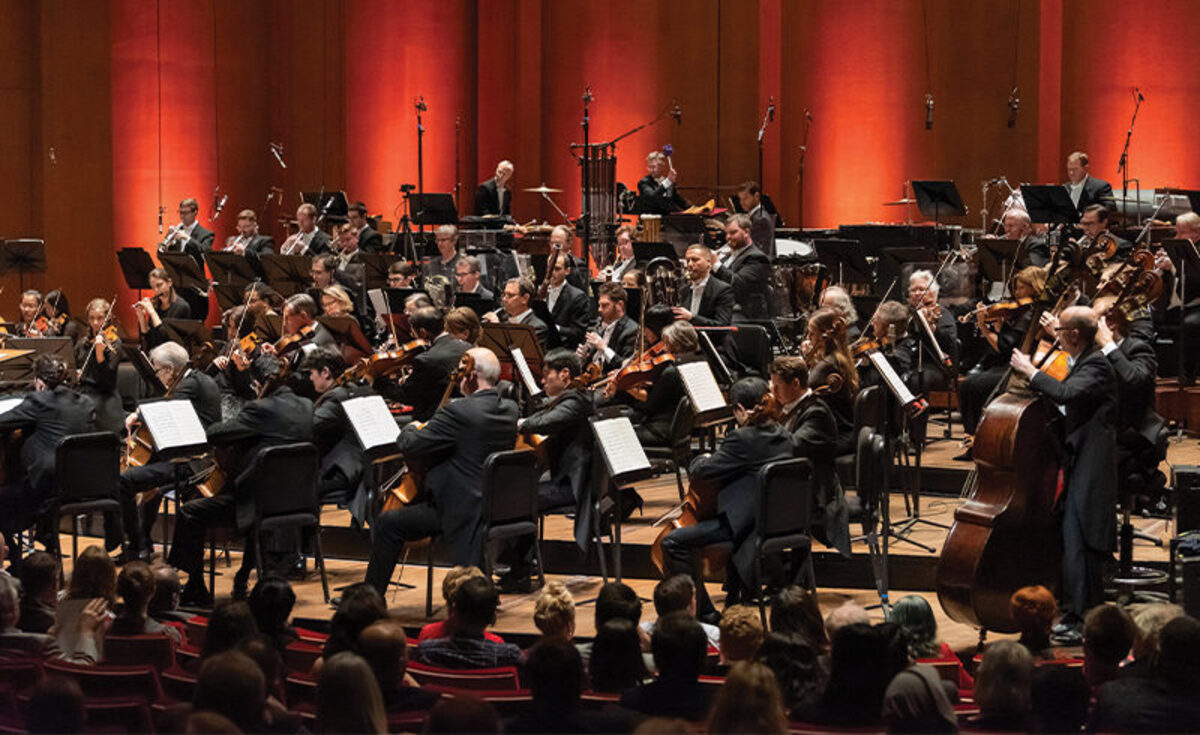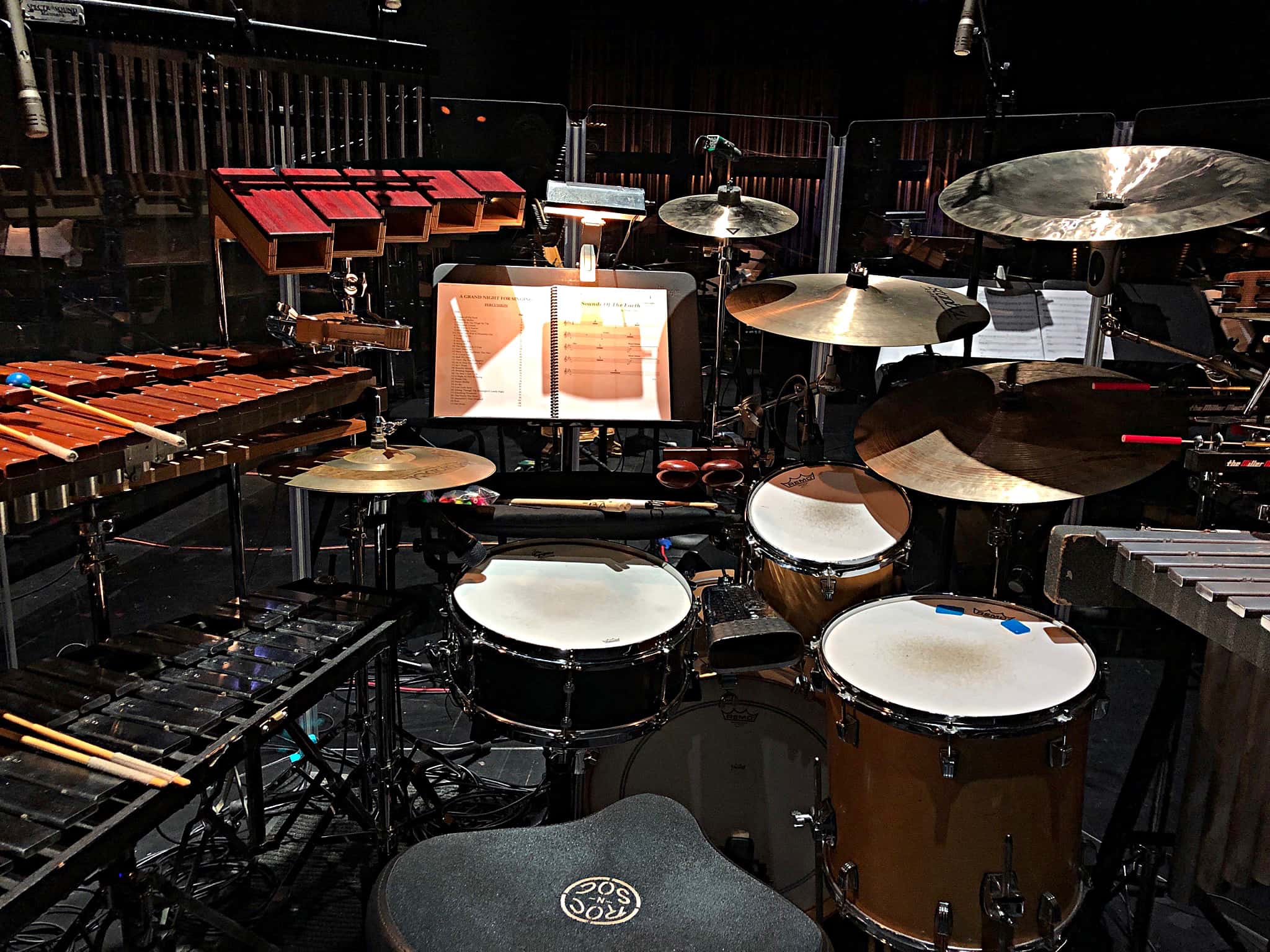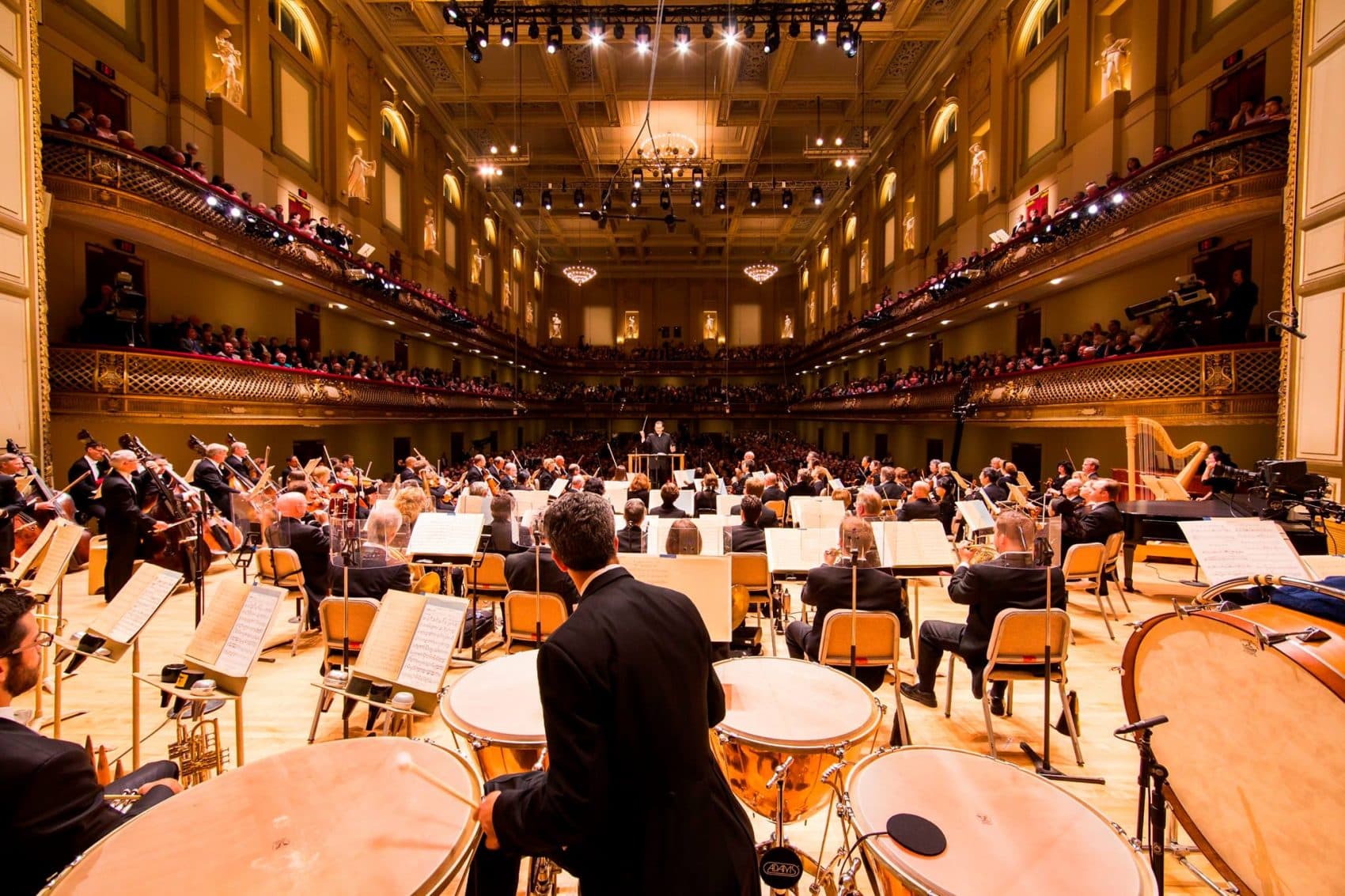Home>Genres>Symphony>How Many Players In A Symphony Orchestra
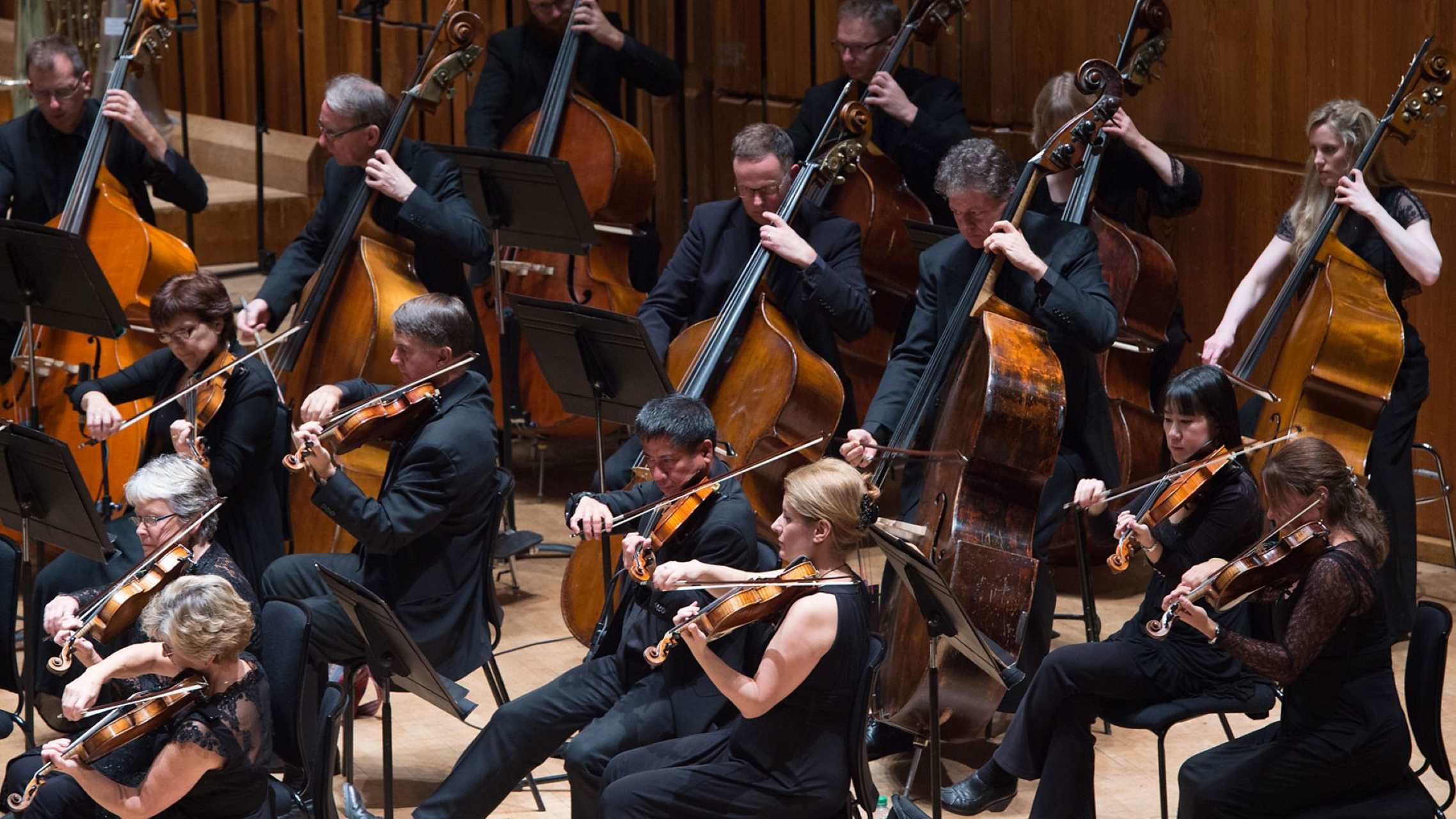

Symphony
How Many Players In A Symphony Orchestra
Modified: February 24, 2024
Discover the incredible ensemble of a symphony orchestra and learn how many players contribute to the harmonious sound. Uncover the magic of symphonies today!
(Many of the links in this article redirect to a specific reviewed product. Your purchase of these products through affiliate links helps to generate commission for AudioLover.com, at no extra cost. Learn more)
Table of Contents
Introduction
A symphony orchestra is a classical ensemble that brings together a diverse group of highly skilled musicians to create an awe-inspiring musical experience. From the vibrant melodies of Mozart to the powerful compositions of Beethoven, symphony orchestras have enchanted audiences for centuries.
In this article, we will explore the fascinating world of symphony orchestras and delve into the question of how many players are typically found in a symphony orchestra. We will uncover the historical origins of these magnificent ensembles and examine the various roles and sections within an orchestra. Additionally, we will discuss the factors that influence the size of a symphony orchestra and the contemporary approaches to orchestra size. By the end of this article, you will have a comprehensive understanding of the composition and organization of a symphony orchestra.
Throughout history, orchestras have evolved and adapted to the changing musical landscape. From humble beginnings in the 17th century, when small groups of musicians performed in palaces and aristocratic households, to the grand symphony orchestras of today, the journey of the orchestra is one of innovation and collaboration. The development of the symphony orchestra as we know it today can be attributed to a few key individuals who revolutionized the world of classical music.
One such individual was Johann Stamitz, a Czech composer and violinist who is considered the father of the modern symphony orchestra. In the mid-18th century, Stamitz introduced important innovations to orchestral composition and performance, including the use of dynamic markings and the division of the orchestra into distinct sections. His contributions laid the foundation for the symphony orchestra as we know it today.
History of the Symphony Orchestra
The history of the symphony orchestra can be traced back to the early 17th century, when small instrumental ensembles were formed to accompany vocal performances in royal courts and churches. These early ensembles, known as “consorts,” consisted of a few key instruments such as the lute, viols, and wind instruments.
However, it was not until the 18th century that the symphony orchestra as we know it today began to take shape. This period, known as the Classical era, marked a significant shift in the history of orchestral music. Composers such as Haydn, Mozart, and Beethoven emerged as prominent figures, and their compositions showcased the increasing complexity and depth of orchestral music.
During the Classical era, the size of the orchestra gradually expanded to accommodate the demands of the composers. The string section became the backbone of the orchestra, with a larger number of violin, viola, cello, and double bass players. Woodwind and brass instruments also gained prominence, adding color and texture to the orchestral sound.
As the 19th century unfolded, the Romantic era brought further changes to the symphony orchestra. Composers embraced larger orchestras, allowing for greater emotional depth and dramatic intensity in their compositions. These grandiose orchestras included an expanded string section, augmented brass and woodwind sections, and the inclusion of percussion instruments.
One of the most influential figures in the development of the symphony orchestra during this period was Richard Wagner. His visionary compositions, such as his monumental four-opera cycle “Ring Cycle,” required massive orchestras to fully bring his musical visions to life. Wagner’s concept of the “Gesamtkunstwerk,” or total work of art, encompassed not only music but also drama, visuals, and staging, necessitating a colossal ensemble.
In the 20th century, composers continued to experiment with the symphony orchestra, pushing the boundaries of its size and composition. The use of electronic instruments, incorporation of non-Western instruments, and exploration of avant-garde techniques all contributed to the ever-evolving nature of the symphony orchestra.
Today, the symphony orchestra remains a vital institution in the world of classical music. It continues to captivate audiences with its rich and diverse repertoire, showcasing the enduring power and beauty of orchestral music.
Roles and Sections in a Symphony Orchestra
A symphony orchestra is a complex ensemble comprised of different sections, each with its own distinct role and set of instruments. These sections work together harmoniously to create a symphonic masterpiece. Let’s take a closer look at the various sections and their roles within the orchestra.
1. String Section: The string section forms the foundation of the symphony orchestra. It consists of violins, violas, cellos, and double basses. The violins are further divided into two sections: first violins and second violins. The string section provides the core melodic and harmonic material and is responsible for the rich and expressive sound of the orchestra.
2. Woodwind Section: The woodwind section includes instruments like flutes, oboes, clarinets, and bassoons. Occasionally, the orchestra may also feature piccolos, English horns, and contrabassoons. The woodwinds bring a diverse range of timbres and colors to the orchestral sound, often playing melodic lines and adding texture and depth to the music.
3. Brass Section: The brass section consists of trumpets, horns, trombones, and tubas. Brass instruments are known for their powerful and majestic sound. They play a crucial role in adding brilliance and warmth to the orchestra, often performing fanfares, majestic themes, and reinforcing dramatic moments in the music.
4. Percussion Section: The percussion section includes instruments such as timpani, snare drums, bass drums, cymbals, tambourine, triangle, and others. Percussion instruments add rhythm, intensity, and color to the orchestral sound. They provide accents, effects, and rhythmic support, enhancing the overall musical performance.
5. Keyboard Section: The keyboard section typically consists of a piano and/or an organ. While not always present in every orchestral performance, keyboards play an essential role in certain compositions, adding depth, texture, and harmonic support to the overall sound.
6. Conductor: Although not technically part of the orchestra, the conductor plays a crucial role in leading and coordinating the musicians. The conductor shapes the interpretation, sets the tempo, and ensures precise synchronization among the sections. They bring the music to life and guide the orchestra through the intricacies of a composition.
Each section within the symphony orchestra is composed of highly skilled musicians who excel in their respective instruments. Together, they create a harmonious blend of sounds, dynamics, and emotions, captivating audiences and breathing life into the music.
Size of a Symphony Orchestra
The size of a symphony orchestra can vary depending on several factors, including the repertoire being performed, the preference of the conductor or composer, and the available resources of the performing organization. While there is no fixed number of musicians that defines a symphony orchestra, there are standard ranges and variations in size.
Traditionally, a symphony orchestra consists of around 70 to 100 musicians, although some may have fewer or more. This number provides a balance between a rich, full sound and practical considerations such as rehearsal space and budget constraints. In larger orchestras, there may be even more players, reaching up to 120 or more.
The size of the orchestra is often determined by the requirements of the musical score. Larger orchestras with ample string players allow for more complex harmonies and a lush sound. Compositions by composers like Mahler or Wagner, known for their grand orchestral works, often require larger ensembles with expanded sections.
It’s worth noting that the size of the orchestra can also vary depending on the style and period of music being performed. Baroque and early Classical music are often performed by smaller ensembles, reflecting the historical context in which the music was composed. These orchestras typically have fewer string players and a smaller overall size.
On the other hand, late Romantic and contemporary compositions may call for larger orchestras with a wide range of instruments to fully express the composer’s vision. These ensembles may include a larger string section, a greater number of woodwinds, brass, and percussion instruments, and even additional instruments or vocalists for specific pieces.
In some cases, chamber orchestras, which are smaller than symphony orchestras, are employed for more intimate and intricate repertoire. These ensembles generally have around 30 to 50 musicians and are often used for Baroque or chamber music performances.
Ultimately, the size of a symphony orchestra is determined by several factors, including historical norms, composer intentions, and practical considerations. Regardless of size, symphony orchestras continue to captivate and inspire audiences with their collective artistry and the transformative power of orchestral music.
Factors Affecting the Number of Players
The number of players in a symphony orchestra can be influenced by various factors. These factors include the musical requirements of the repertoire, the vision of the composer or conductor, the availability of resources, and the artistic goals of the performing organization. Let’s explore some of the key factors that affect the number of players in a symphony orchestra.
1. Repertoire: The musical compositions being performed play a significant role in determining the size of the orchestra. Different pieces require different instrumentations and vary in complexity. For example, a chamber orchestra may be suitable for Baroque or Classical compositions, while larger orchestras may be necessary for performing expansive works by Romantic or contemporary composers.
2. Artistic Vision: The conductor and composer’s artistic vision also influences the size of the orchestra. Some conductors prefer a larger ensemble to achieve a full and rich sound, while others may opt for a smaller ensemble to bring out the nuances and clarity of the music. Composers may specify the number of players in their scores or leave it open to interpretation.
3. Resources: The resources available to the performing organization, such as budget, rehearsal space, and venue size, can impact the number of players in an orchestra. Bigger orchestras often require more funding and larger rehearsal spaces to accommodate the musicians. Smaller organizations may need to limit their orchestra size due to financial constraints.
4. Artistic Goals: The artistic goals of the performing organization can also play a role in determining the number of players. Some organizations may prioritize showcasing a vast and powerful sound, requiring a larger orchestra. Others may focus on exploring chamber music repertoire or contemporary works, leading to smaller ensemble sizes.
5. Historical Context: The historical context and performance practices can influence the number of players in a symphony orchestra. The size of orchestras has evolved over time, and some organizations may strive to recreate historical performance practices by using smaller ensembles for specific periods or repertoire.
It’s important to note that while these factors can affect the number of players in an orchestra, there is no universal formula or fixed standard. Each orchestra and performance may have its own unique configuration based on these considerations. Ultimately, the goal is to create the best possible interpretation and experience for the audience, while considering practical and artistic factors.
Standard Number of Players in a Symphony Orchestra
While there is no universally defined standard for the number of players in a symphony orchestra, there are general guidelines that help establish a typical size. These guidelines provide a balance between achieving a rich, full sound and ensuring practical considerations such as rehearsal space, budget, and available resources. Let’s delve into the standard number of players found in a symphony orchestra.
Traditionally, a symphony orchestra comprises around 70 to 100 musicians, although the exact number can vary. This range is commonly seen as a benchmark for a well-balanced and versatile ensemble. However, it is important to note that some orchestras may have fewer or more players depending on the specific musical requirements and artistic goals.
The string section forms the core of the symphony orchestra and typically consists of a large number of musicians. The first violins usually have 16 to 18 players, accompanied by a slightly smaller section of second violins. The viola section generally consists of 12 to 16 players, while the cello and double bass sections have 10 to 12 players each. These numbers may vary depending on the repertoire and the desired sound.
The woodwind section typically includes two flutes, two oboes, two clarinets, two bassoons, and sometimes additional instruments like piccolos, English horns, or contrabassoons. The brass section usually has four French horns, two to three trumpets, two to three trombones, and a tuba. The percussion section includes timpani, snare drums, bass drums, cymbals, and various other auxiliary percussion instruments. The size of these sections may vary depending on the musical requirements.
It’s important to mention that the standard number of players can also be influenced by the size of the venue for which the orchestra is performing. Larger concert halls may require slightly larger orchestras to ensure adequate projection and balance of sound.
While a general standard number of players exists, it’s important to emphasize that artistic preferences and the musical vision of the conductor or composer can lead to variations in the size of a symphony orchestra. Larger ensembles may be utilized for grand orchestral works or specific musical styles, while smaller ensembles may be preferred for more intimate or chamber music repertoire.
Ultimately, the standard number of players in a symphony orchestra serves as a helpful reference point to ensure a balanced and cohesive ensemble. However, the artistic goals, musical requirements, and resources available to the performing organization play a significant role in shaping the final configuration of the orchestra.
Variations in Orchestra Size
While a standard number of players exists for symphony orchestras, there are variations in orchestra size that arise due to artistic, practical, and historical considerations. These variations allow for flexibility in the interpretation of different musical genres and styles. Let’s explore some of the common variations in orchestra size.
1. Chamber Orchestra: A chamber orchestra is a smaller ensemble that typically consists of 30 to 50 musicians. This configuration allows for more intimate performances and is often used for repertoire from the Baroque and Classical periods. Chamber orchestras are known for their clarity, precision, and the ability to highlight individual musical lines.
2. Full Symphony Orchestra: The standard full symphony orchestra, with around 70 to 100 musicians, provides a balanced and versatile sound. This size is commonly used for performing a wide range of repertoire, from the classical works of Mozart to the powerful symphonies of Beethoven.
3. Expanded Orchestra: In certain compositions, composers may call for an expanded orchestra with larger sections and additional instruments. This can include doubling or tripling the number of woodwind and brass players, and also incorporating additional percussion instruments. This expansion allows for more complex textures and richer harmonies, providing a grandiose sound.
4. Reduced Orchestra: For practical and budgetary reasons, or to achieve a specific artistic effect, orchestras may be reduced in size. This can involve having fewer players in each section or omitting certain instruments altogether. Reduced orchestras are often used for contemporary or experimental compositions, where a more intimate sound or specific instrumental colors are desired.
5. Historical Performance Practice: In an effort to recreate the sound and performance practices of specific historical periods, some orchestras adhere to historically informed performance (HIP). These ensembles may use smaller orchestra sizes, following the instrumentation and playing styles of the time in which the music was composed. This approach brings a unique authenticity to the interpretation of Baroque and early Classical repertoire.
It’s important to note that variations in orchestra size are not limited to these examples, and different ensembles may employ unique configurations based on their artistic objectives and available resources. Regardless of the size, each orchestra strives to deliver captivating performances that honor the intentions of the composers and engage the audience in a powerful musical experience.
Contemporary Approaches to Orchestra Size
In recent years, there has been a shift in the approach to orchestra size, with some contemporary ensembles exploring unconventional configurations. These alternative approaches to orchestra size reflect evolving artistic visions, experimental compositions, and a desire to challenge traditional norms. Let’s delve into some contemporary approaches to orchestra size.
1. Small and Flexible Ensembles: Some contemporary orchestras and ensembles adopt a smaller and more flexible structure. These ensembles may prioritize agility, precision, and versatility in their performances. With a reduced number of musicians, they can explore a wide range of repertoire, from classical works to contemporary compositions, embracing a more innovative and dynamic approach to orchestra size.
2. Orchestra Collectives: Orchestra collectives are collaborative organizations that bring together musicians from diverse backgrounds and disciplines. These collectives often have flexible ensemble sizes and may incorporate elements of improvisation, contemporary music, and multimedia collaborations. By pushing the boundaries of traditional orchestral conventions, they offer fresh and unique experiences for audiences.
3. Electroacoustic Ensembles: With the advent of technology, electroacoustic ensembles have emerged as a contemporary approach to orchestra size. These ensembles combine traditional acoustic instruments with electronic elements, creating innovative and immersive sonic experiences. By integrating electronic sounds and live electronic manipulation, these ensembles explore new sonic possibilities and push the boundaries of traditional orchestral configurations.
4. Orchestra-Meets-Band Hybrid: In certain musical genres, there is a growing trend of merging the symphony orchestra with elements of a band or popular music ensemble. This hybrid approach blends the power and richness of an orchestra with the driving rhythms and contemporary sound of a band. It allows for the exploration of various musical genres, ranging from classical crossover to film and video game music.
5. Virtual Orchestras: With advancements in technology, virtual orchestras have gained popularity in recent years. These ensembles utilize computer software and sample libraries to replicate the sound of a full symphony orchestra. Virtual orchestras allow composers and producers to create music and soundtracks with the flexibility and convenience of digital instruments, opening up new possibilities and accessibility in music production.
These contemporary approaches to orchestra size demonstrate the evolving nature of orchestral music. By embracing innovative configurations, experimental compositions, and new technologies, contemporary ensembles offer exciting and diverse experiences for both performers and audiences alike. These approaches reflect the continuous evolution of music and the willingness to push boundaries, shaping the future of orchestral performance.
Conclusion
The symphony orchestra is a magnificent ensemble that has captivated audiences for centuries. From its humble beginnings as small instrumental consorts to the grand and powerful orchestras of today, the symphony orchestra has evolved and adapted to the ever-changing landscape of classical music. Through its diverse sections and roles, it creates a harmonious blend of sounds, showcasing the immense talent and skill of its musicians.
While there is no fixed standard for the number of players in a symphony orchestra, there are general guidelines that provide a balance between achieving a rich, full sound and considering practical considerations such as budget and resources. Within these guidelines, there are variations in size based on artistic goals, historical performance practice, and the particular musical requirements of the repertoire being performed.
In contemporary times, there has been a shift in the approach to orchestra size, with alternative configurations and experimental ensembles coming to the forefront. These contemporary approaches embrace smaller and flexible ensembles, orchestra collectives, electroacoustic ensembles, orchestra-meets-band hybrids, and virtual orchestras, showcasing the ongoing evolution of orchestral music and the incorporation of modern technologies.
Ultimately, the symphony orchestra continues to enchant and inspire listeners around the world. Its ability to convey a wide range of emotions, from the delicate nuances of a solo instrument to the powerful crescendo of a full ensemble, is a testament to the remarkable artistry and collaborative spirit of the musicians involved. Whether it is the classic works of the past or the innovative compositions of the present, the symphony orchestra remains a timeless and awe-inspiring entity, delivering breathtaking musical performances that transcend time and resonate deeply with all who experience them.

